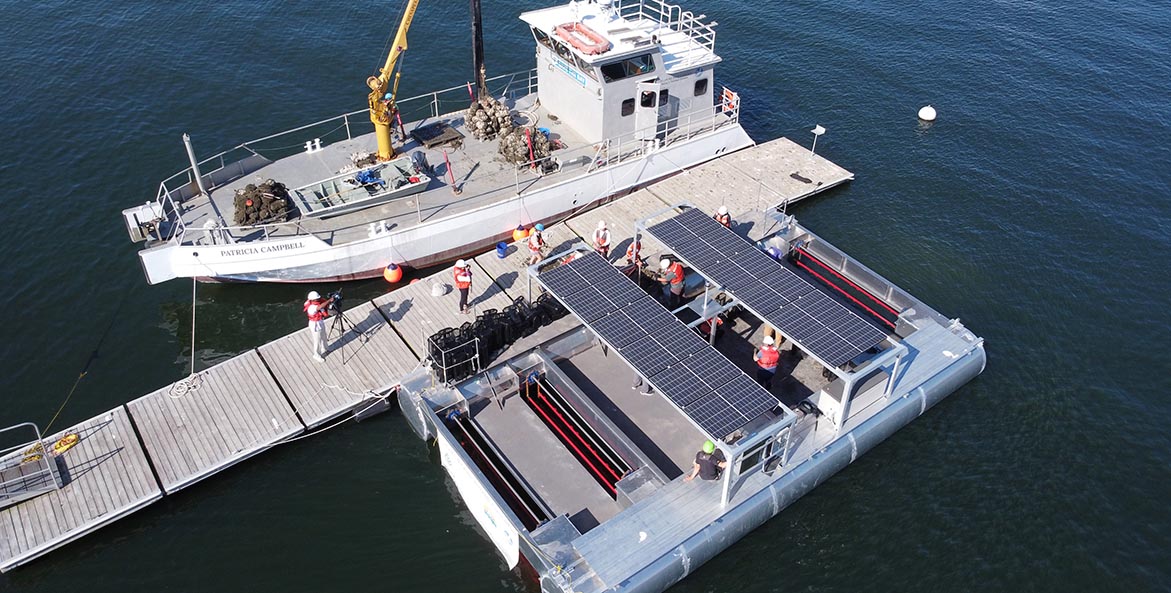Oysters are fascinating critters integral to the health of the Chesapeake Bay, often referred to as a keystone species for their role in maintaining the system as a whole. They filter harmful pollutants from the water, promote an increase in habitat for fish and other aquatic animals, and provide enormous economic benefits to coastal communities—not to mention excellent fishing spots over a healthy reef.
The good news is oyster populations are on the rise. Oysters saw a five-point improvement in the recently released 2022 State of the Bay report, the largest increase of any indicator. Both 2020 and 2021 were record years for oyster reproduction, with Maryland and Virginia reporting some of their highest numbers of juvenile oysters in the past 30 years. Additionally, large-scale reef restoration work is complete in seven out of the 10 tributaries that Maryland and Virginia committed to restore under the 2014 Chesapeake Bay Watershed Agreement.
That’s not to say oysters are out of the woods yet—the overall score for the fishery is still an “F”, and populations are still at a pitiful fraction of what the system is capable of hosting. But there is true cause for hope, and one of the big reasons is the growing enthusiasm and momentum generated by the organizations and businesses comprising the Chesapeake Oyster Alliance (COA).
COA recorded its 4.47-billionth oyster in the fall of 2022, nearly halfway to its ambitious goal of adding 10 billion new oysters to the Bay by 2025. Many other allies also contribute vast numbers of oysters toward the progress of the 10 billion oysters goal—including state and federal agencies and non-profits supporting large-scale restoration.
Launched by the Chesapeake Bay Foundation in 2018, the coalition has since blossomed into a formidable force of more than 90 non-profits, academic institutions, oyster growers, and other businesses across Maryland and Virginia. Together, they promote not only oyster restoration, but the oyster movement as a whole, with a special focus on aquaculture, science, and public education.
The COA’s collaborative approach is working.
“I believe the COA has been an excellent means of bringing together people who represent diverse groups interested in one thing: restoring the important oyster resource to benefit our bays for future generations,” said Don Webster, regional extension specialist at the University of Maryland and a COA partner. “I've been very impressed with the meetings where citizen gardeners, oyster farmers, scientists, extension faculty and others meet and share experiences and ideas.”
What started with regular meetings to inspire and align partners has since grown into multi-day conferences; an annual Chesapeake Oyster Science Symposium attracting researchers and industry practitioners from around the nation and the world; fishing tournaments that help provide data on the biodiversity of restored reef habitat; competitive innovation grants to support oyster restoration and outreach; and many other initiatives designed to support and advance the restoration and public awareness of the Bay’s iconic bivalve.
A major focus of the coalition is increasing oyster aquaculture efforts in coastal communities, as it provides both economic and environmental benefits.
“For me, I think the biggest leap forward is having people that are interested in protecting the environment and restoration discovering that shellfish farmers are passionate stewards of the environment,” said Bill Walton, Acuff Professor and coordinator of the Shellfish Aquaculture Program at the Virginia Institute of Marine Science. “Shellfish farmers are growing oysters for food, but they rely on a healthy, thriving environment. COA has provided a way for more people to see that passion and dedication.”
In 2020, when the Covid-19 pandemic rocked the foundations of oyster restoration and aquaculture operations, COA organized “Oyster Pop Up” events where growers could sell directly to consumers in socially-distanced, outdoor settings. And in 2021, COA launched its partnership with Solar Oysters LLC, which designed an automated aquaculture platform that uses solar power to rotate large oyster cages filled with young oysters to clean the bivalves and help them grow over time. Launched in the Baltimore Harbor, this cutting-edge technology has the potential to reshape the oyster aquaculture industry.
In conjunction with the Chesapeake Bay Trust, COA awarded Solar Oysters LLC an Oyster Innovation Grant. The grant program was created to drive innovation in the oyster sector and magnify the incredible work happening across the Bay. This year, over $115,000 in new grants were recently awarded to 13 different oyster-related businesses and organizations that are working on projects to boost oyster aquaculture production and oyster restoration in the Chesapeake Bay.
Much work remains. Three of the 10 tributaries slated for large-scale restoration remain unfinished, and their completion will be a central focus leading up to 2025. COA will also be putting extra emphasis on promoting and advocating for the aquaculture industry, from which a significant portion of the 10 billion count is derived. And as it prepares for the major milestone of its five-billionth oyster, the coalition will continue to challenge partners and supporters to think outside of the box on how to support the long-term resurgence of oysters and the oyster industry in the Chesapeake Bay and beyond.
“There is no competition in the oyster community, only collaboration,” said Will Smiley of the Tides Inn, a COA partner. “We all want to protect the resource and the fishery. We want a clean bay, a healthy oyster population, and a healthy seafood industry for Maryland and Virginia.”
Learn more about the Chesapeake Oyster Alliance and how you can help add 10 billion oysters to the Bay. There are three levels of partnership we welcome you to consider. Follow us on Instagram and Facebook.





